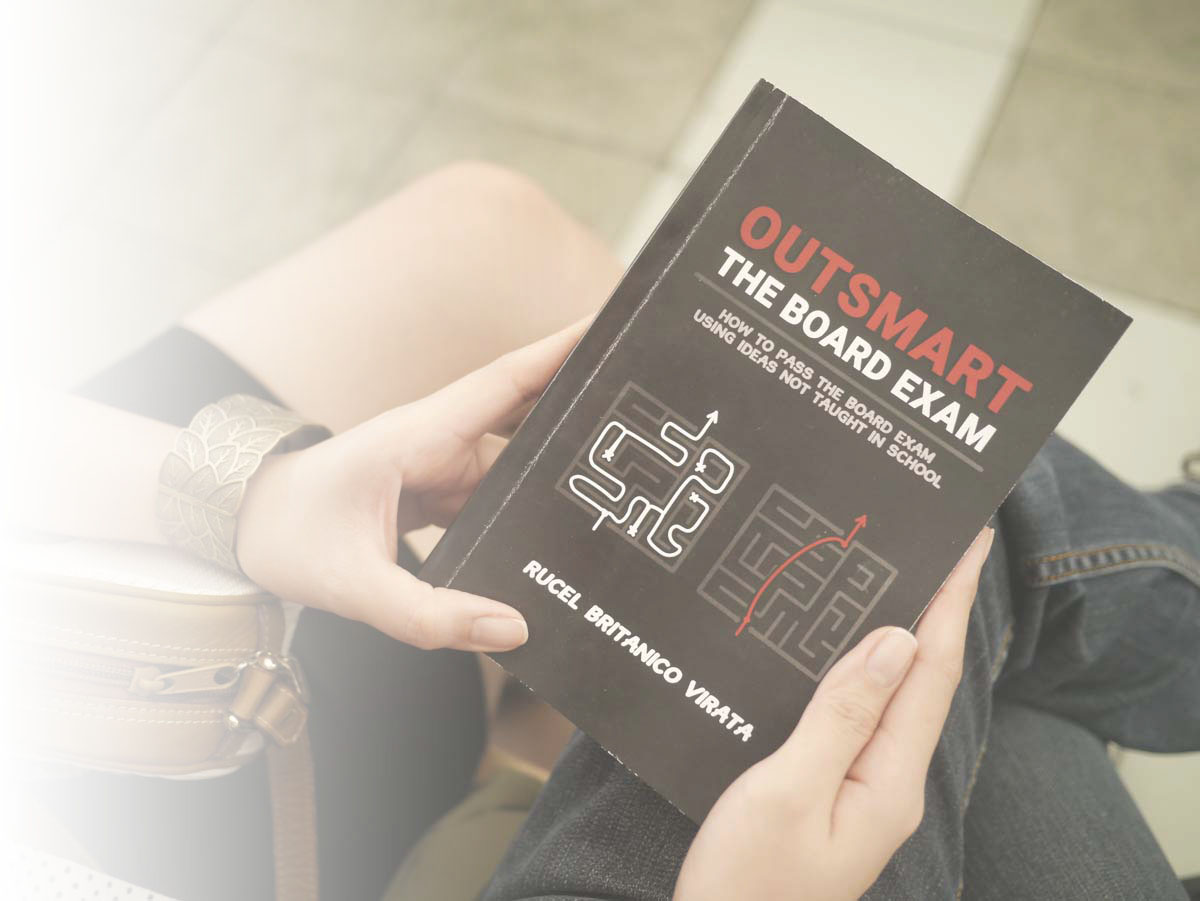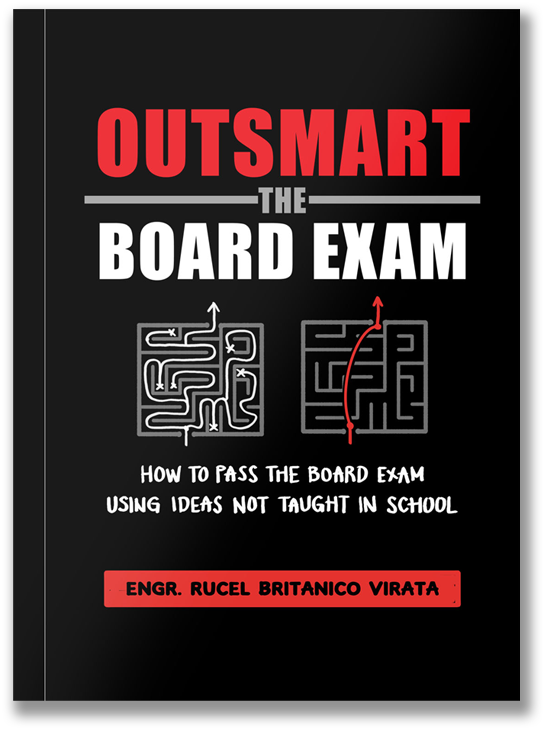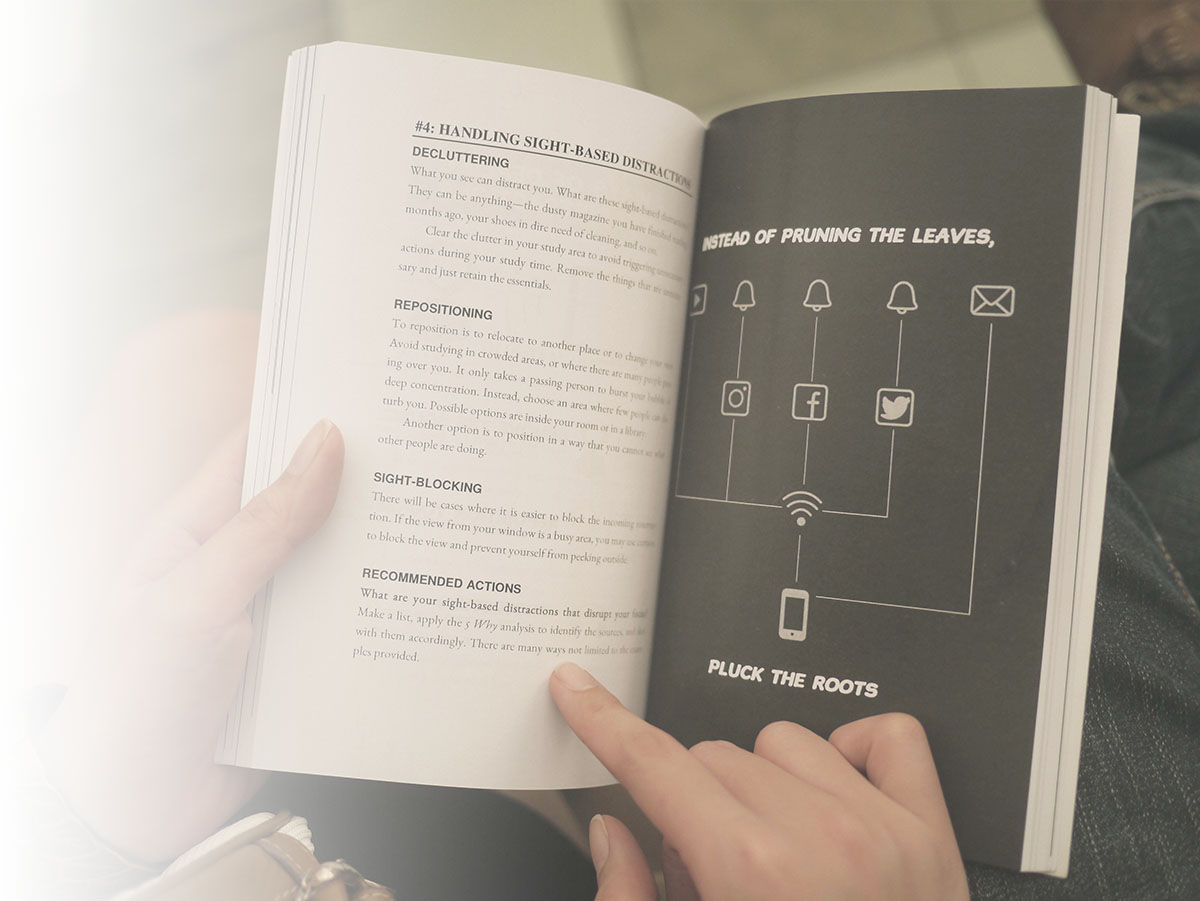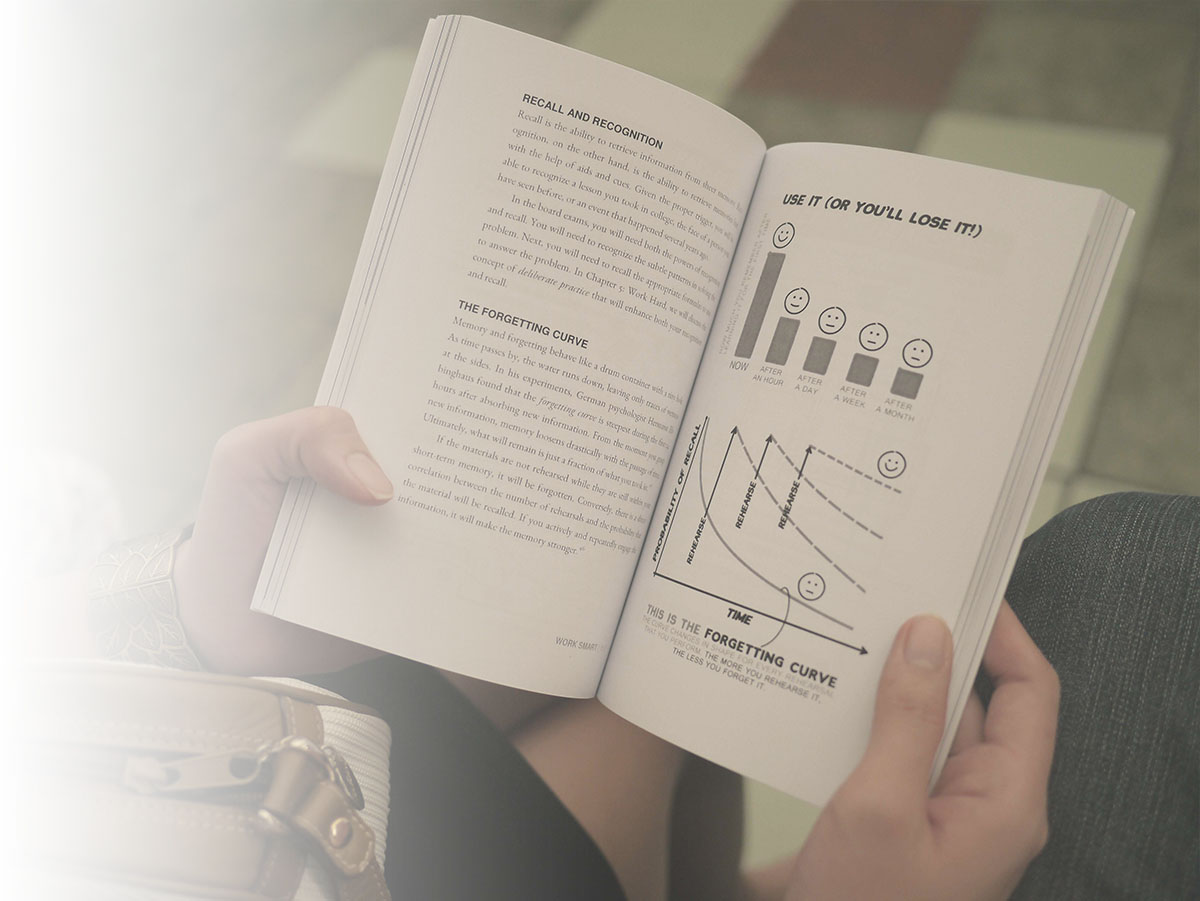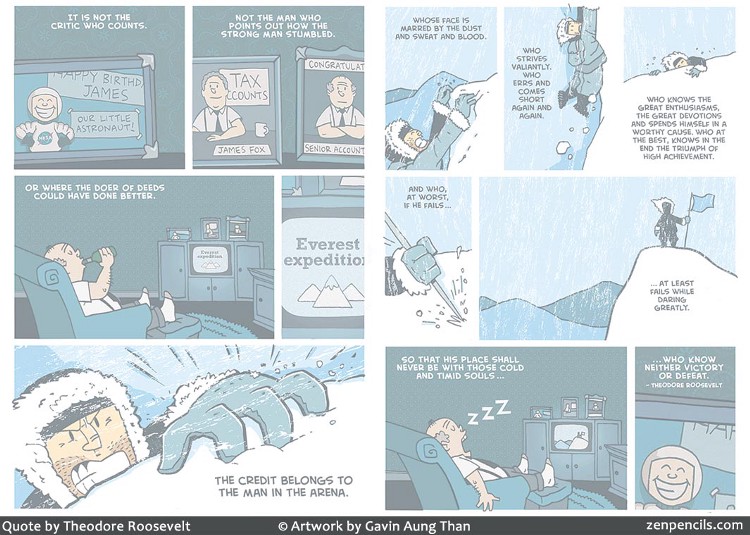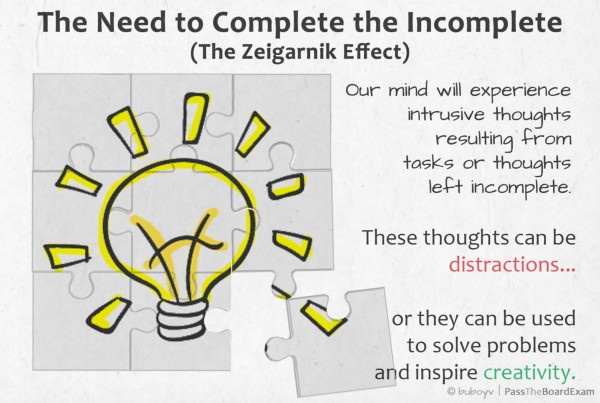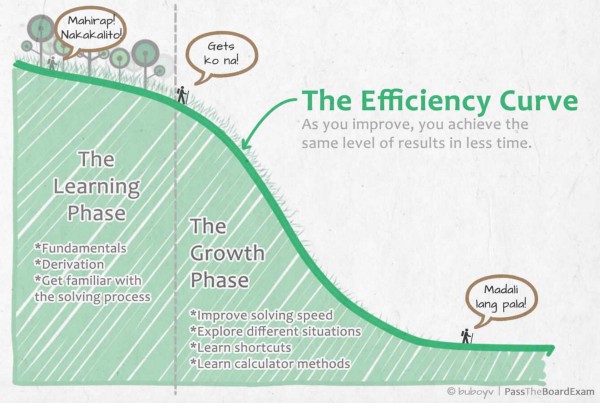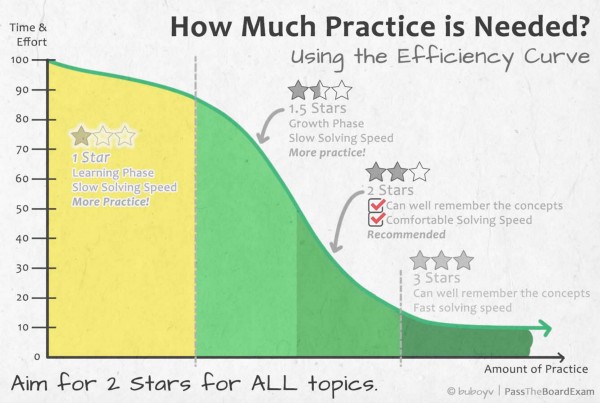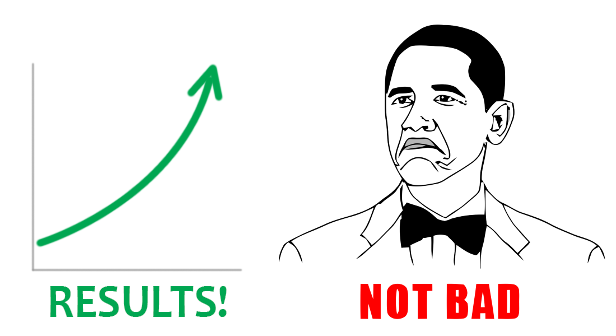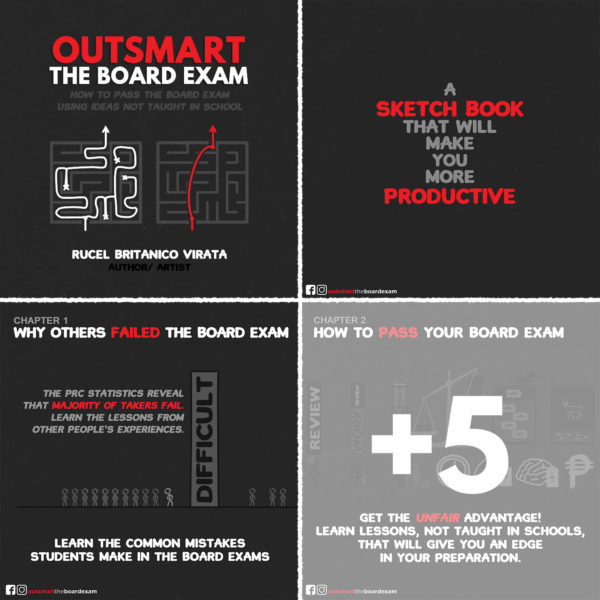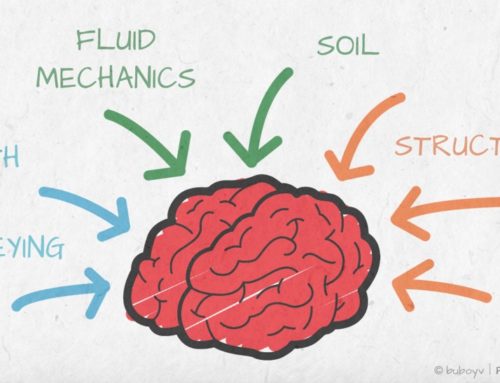Author’s Note: This was originally posted on medium.com on April 9, 2016 and was shared 2,050+ times. Enjoy!
This is part 2 of 3 posts, learn the Secret — How Two Regular Students Topped the Civil Engineers Board Exam.
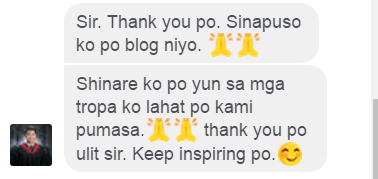
Happy to help! Congratulations Engineer! 🙂
In 10 minutes, learn the following:
- 6 lessons for better concentration and productivity
- How to learn by heart
- Are you under-practicing or over-practicing? The Efficiency Curve may guide you
- The truth about talent and achievement that will change how you view top athletes, professionals, and yourself
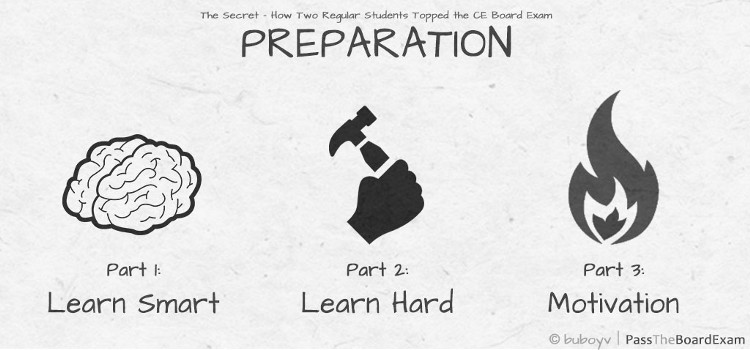 Preparation = (Learning Smart) * (Learning Hard) * (Motivation)
Preparation = (Learning Smart) * (Learning Hard) * (Motivation)
- Part 1: Learn Smart helps aim the direction of review and make learning more effective.
- Part 2: Learn Hard helps you get quality concentration and better practice.
- Part 3: Staying Motivated, the driving force, helps you develop a burning desire to succeed
CONCENTRATION & PRODUCTIVITY: 6 Lessons you Need to Learn
I formerly worked for a major construction company here in the Philippines. A typical workday includes managing people and checking progress, meetings, paper works, and other small tasks. Everything must be finished fast and efficient. Delaying and working slow only results to a longer list.
This never-ending barrage of tasks taught me lessons on how to be productive in an environment full of distractions. In 6 key lessons, I’ll share with you how to concentrate better, eliminate distractions, and get the job (or subject) done!
Lesson #1: Simplify. Focus on the Important Activities
To simplify is to make life less complex. To simplify is to apply the 80/20 principle to your activities. The reason it’s effective? Less activities, less cognitive load, and more concentration.
Simplify in 2 Steps
- First, identify the top 20% of your tasks that can account for 80–100% of your results. Spend more time with them.
- Second, identify the bottom 80%, the time-consuming tasks that contribute little to your results. Resolve to downsize, eliminate, and delegate as many of them as possible, as quickly as you can.
Related: If you aren’t familiar with the 80/20 principle, visit Part 1: Learn Smart.
Other Simplification Tips
- Save your time and energy for the important stuff, like a boss.
- Leverage. Use other peoples’ time and energy: If something can be done 80% as well by someone else, delegate.
- Say ‘NO’ — in a polite but assertive way — to demands not consistent with your goals. Saying ‘no’ without giving further explanation is also effective.
- Do more key activities. Do less trivial activities. Start value creating habits. Stop destructive habits.
Billionaires Mark Zuckerberg (Facebook) and the late Steve Jobs (Apple, Inc.) simplify by wearing the same kind of clothes everyday.
Lesson #2: Multitasking Destroys Productivity
Multitasking is the act of performing multiple tasks at the same time. It gets lots of things done simultaneously… or does it?
In truth, multitasking only causes constant interruptions. Concentration and productivity are similar to deep sleep. You don’t just go directly into dreaming, you go through stages. Any interruption forces you to start over.
Multitasking not only prolongs tasks, but also increases the number of errors you make.
Key Lesson: Stop multitasking. Instead, focus on a single task.
Lesson #3: Deadlines and Positive Pressure Forces Productivity
Have you ever experienced being given a difficult assignment with a correspondingly strict deadline? Yet miraculously managing to finish and beat the deadline.
How about the project with a 2-week time limit? You started early, constantly made revisions, and finished the project barely before the deadline.
How about the side project without a clear completion target? Gets started, but never finished.
Have you noticed a pattern here?
Work expands to fill the time available for its completion. This is called the Parkinson’s Law.
Positive Pressure
A strict — yet achievable — deadline will trigger positive pressure, the panic feeling that causes productivity miracles. An activity with no deadline will go on indefinitely.
Key Lesson: Work miraculously adjusts to time limits. Set a clear, strict deadline before starting.
Lesson #4. Complete the Incomplete
Ever had the situation where you constantly think why your crush hasn’t replied to your text? Or that unexplained urge to watch the latest episode of Game of Thrones? Or that time when you misplaced your keys and not knowing where you left them?
This is the Zeigarnik effect: our mind’s tendency to finish off an incomplete task or thought. We will experience recurring and intrusive thoughts until the task or thought is closed.
The Zeigarnik effect can either rob us of our ability to concentrate, or it can be leveraged as a powerful tool. Here’s how:
Countering the Zeigarnik Effect
To close intrusive thoughts, you can:
- Write the thoughts down on paper. Writing it down can lessen the effects
- List the thoughts down on phone. Use apps like Evernote or Google Keep (both are FREE note saving apps)
- Or finish the incomplete task, asap
Ways to Leverage the Zeigarnik Effect
Letting thoughts or ideas linger, especially during trivial tasks, may help in:
- Formulation of a solution to a problem
- Creative thinking — like an author thinking of ideas, an artist drawing inspiration, etc.
Lesson #5. Working and Resting should be Balanced
Staying productive is balancing focus and rest. Sustaining focused attention consumes energy. Similar to our bodies, our minds also experience fatigue. The signs of a brain running on empty are irritability and wandering thoughts.
The Pomodoro Technique
A proven way to prevent mental exhaustion and manage distractions is the Pomodoro technique.
The Pomodoro Technique: Scheduling bursts of focused, uninterrupted effort (25 minutes) followed by short bursts of rest (5 minutes). Repeat.
Note that the time limits are flexible and varies per person. I personally use 35–10 minutes. Study what combination works best for you and adjust accordingly.
Tip: the timer app ClearFocus can help you in this technique. I personally use it. It’s simple to use and it’s FREE.
On a Larger Scale — Rest Days
It is not sustainable to work our bodies and minds every single day. That’s why time for play and rest are must haves.
Lesson #6: There are 3 Ways to Deal with any Distraction
The environment you’re in can make or break your productivity.
Whether it’s the sound of hammering from the neighbor’s house, the ‘group study’ where there are more story telling than results, or the inconsiderate roommate — there are 3 options to solve any kind of distraction.
3 Ways to Deal with Distractions
- Remove the distraction (ex. turning the TV off)
- Isolate yourself (ex. moving to another room)
- Use protection (ex. wearing headsets and playing instrumental music)
More distractions eliminated = ↑ Concentration, ↑ Productivity
Tip: Create your own background noise using Noisli, a FREE web app that can emulate the sounds of rain, ocean waves, and other background noises that can help you concentrate.
Related: 40 Inspiring Workspaces of the Famously Creative
LEARN BY HEART: The Efficiency Curve
During review, I overheard a conversation between my classmates. A student said, “Learn by heart kasi ‘dre. Para maski bali-baliktarin ang tanong, kaya mo sagutin. Wag puro shortcut (or CalTech!)”
Good point. But what does he mean by learn by heart?
The Efficiency Curve, a concept from ‘Focal Point’ by Brian Tracy, may help drive the point.
Learning a subject is like passing a thick forest. Inside this forest, it’s easy to stumble, become confused, and get lost. Making progress takes time and effort. But the more you become familiar with the path, the more the trail gets manageable.
In the Efficiency Curve, this thick forest represents the Learning Phase, where you learn a topic’s fundamentals, its derivation, and where you gain familiarity with the solving process. [Edit: this is also known as thinking based on First Principles; used by Aristotle, Rene Descartes, and Elon Musk]
The Growth Phase is where you learn to efficiently apply these ideas. The growth phase is also where you develop speed. The more you practice, you get the same results using less time and effort.
Going back to my classmates’ conversation, to learn by heart is to start with the fundamentals and go through the learning phase. It’s tempting to go directly to easy shortcuts without learning the basics.
WHAT GETS MEASURED, GETS IMPROVED
To help you gauge if you are under-practicing or over-practicing, I’ll show you an approach I call the 3-Star Approach.
The 3-Star Approach
0 Star = New Topic; Slim chance of solving the problem |Start Practicing
1 Star = You are in the Learning Phase; Slow Solving Speed | Keep Practicing
2 Stars = Growth Phase; Comfortable Solving Speed | The Sweet Spot — If you can solve a problem just by imagining it step-by-step, with complete clarity, at a comfortable speed, then you’re at this level buddy.
3 Stars = Expert Level; Fast Solving Speed | Optional — If you have the time and energy, why not
Instruction: Every time you solve a problem, evaluate yourself. Are you in the Learning Phase (1 Star)? Or were you able to progress to the Growth Phase (2–3 Stars)?
If you want to pass the board exams, I suggest a level of 2 Stars in all the recent board exam topics (remember the vital topics in Part 1: Learn Smart?).
If you plan to top the board, I suggest maintaining 2-Stars in as many topics possible.
If you’re aiming for the top, every topic counts
Sharing my experience, I really intended to top the board. I aimed having fast solving speeds (3-stars) in all vital topics and reviewed a few new topics. As it turned out, this is a flawed strategy.
To our surprise, there was a new examiner. We had to take smart, lucky guesses to solve unfamiliar topics. It’s also difficult to answer questions with typographical errors (examiners are humans too, they err).
A realization: the board exam isn’t a speed contest; it’s about the number of correct answers. To gain an advantage, once you have studied all vital topics, you should expand learning as many new topics.
Making it to the top 10 is extremely competitive. One wrong answer could mean not making the cut. Or taken the other way, one lucky guess could mean making your way in. There were many students who ranked in our pre-boards but didn’t make the list (surprisingly including our batch’s consistent champion in all quiz contests and the pre-board exams). I have to admit, I may be lucky, but it isn’t an accident. Luck happens when preparation meets opportunity. 😉
Old trophies aren’t carried over to the next battle because every battle requires its own preparation. The most prepared just before the exam will make it to the top.
My former boss shared his strategy. During his preparation, he didn’t limit himself to the materials handed by the review center (Gillesania). Because he has friends who studied at a competing review center (Besavilla), he was also able to get all their materials. A smart move that landed him the 2nd Place! A secret move he kept from Mr DIT Gillesania.
THE TRUTH ABOUT TALENT: Deliberate Practice
The popular belief about talent: Either you have it or you don’t. Nature or nurture? What is correct?… or are we asking the wrong question? To expound on this, I’ll share an excerpt from Outliers: The Story of Success by Malcolm Gladwell.
In the early 1990’s, a team of psychologists in Berlin, Germany conducted a study on violin students. Specifically, their practice habits during childhood, adolescence, and adulthood.
All the violinists had begun playing at age 5 with similar practice times. However, at age 8, practice times began to diverge. By age twenty, the elite performers averaged more than 10,000 hours of practice each; the good students totalled 8,000; while the less able performers had only 4,000 hours of practice.
The fascinating points of the study: The researchers couldn’t find “naturally gifted” musicians who were able to breeze effortlessly to the top with fewer practice hours. Nor could they find “grinds” — the people who practiced harder — yet didn’t make the top ranks. Once an musician has enough talent, what distinguishes accomplishment is how hard he or she practices. In other words, the talented are the ones who practiced the most.
[EDIT: The 10,000 hour rule was debunked by in recent studies. The magic number isn’t necessarily 10,000; it varies. Still, the relationship between deliberate practice and level of skill holds true]

Champions aren’t born, they’re made. Talent and achievement could be acquired if you are willing to put in the time.
Six months of hustle is a small price for the lifetime title of ‘Engineer.’ I encourage everyone to aim and practice for the top. It’s a smart risk with nothing to lose for trying very hard. Don’t count yourself out so easily because it can be done with persistence. 😉
Graduating from a tough course like engineering is already proof of your ability. The only limit to your achievement is how hard you are willing to practice. How badly do you want it? Study hard and make your parents proud! 🙂
Do you have questions about preparing for the board exams? Feel free to comment or send me a message. 🙂
Rucel Britanico Virata
Civil Engineer | I share self-improvement hacks you won’t learn in school
Artist/ Writer — PassTheBoardExam.com
Related Articles:
Why 6 months preparation is just enough for the board exam
How Homework make Preparing for the Board Exams easier
Keeping Yourself Motivated: Record your Little Victories
Learn Smart: How to Prepare for the Civil Engineers Board Exam
Sharing is caring. Don’t forget to share to those who will be taking their board exams. 🙂
Want to increase your chances of passing your board exam? Check out Outsmart The Board Exam — How to pass the board exam using ideas not taught in school.
Have questions about the board exams? Feel free to comment below.

